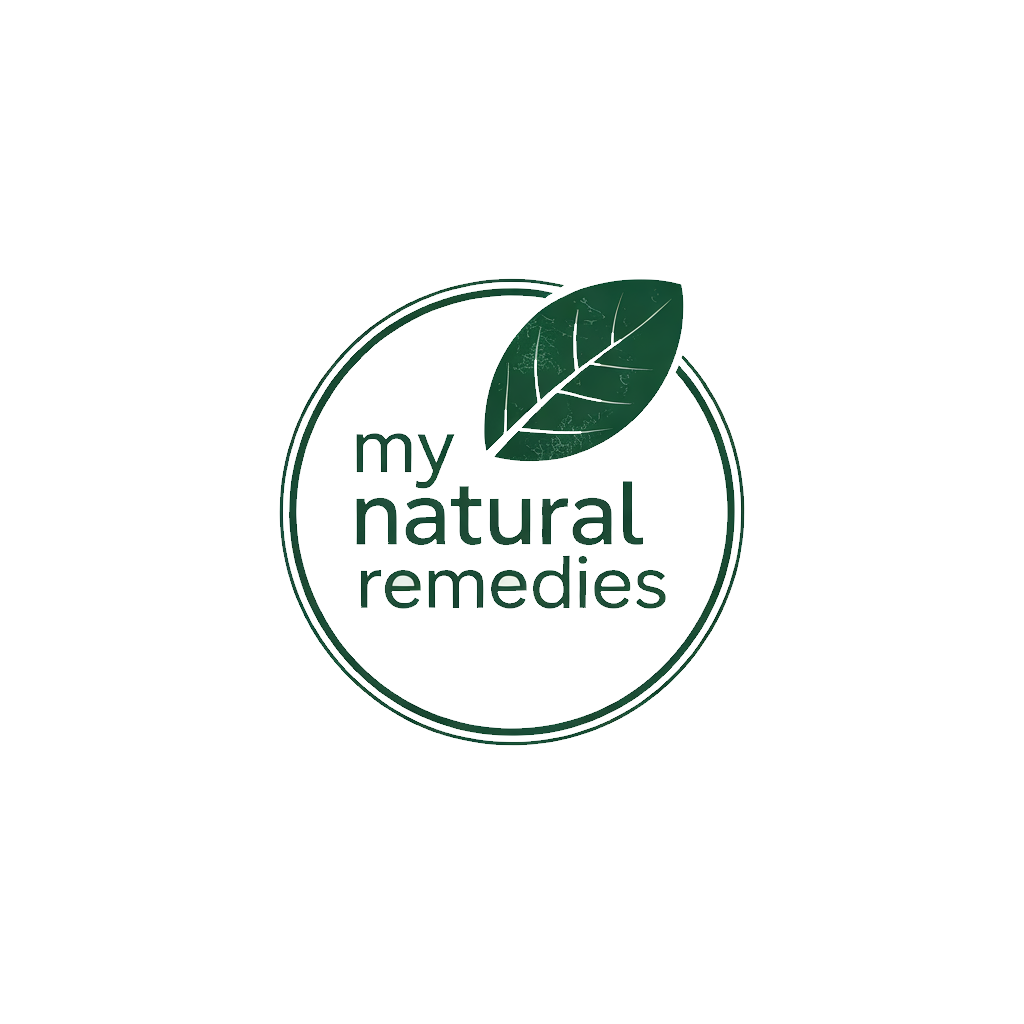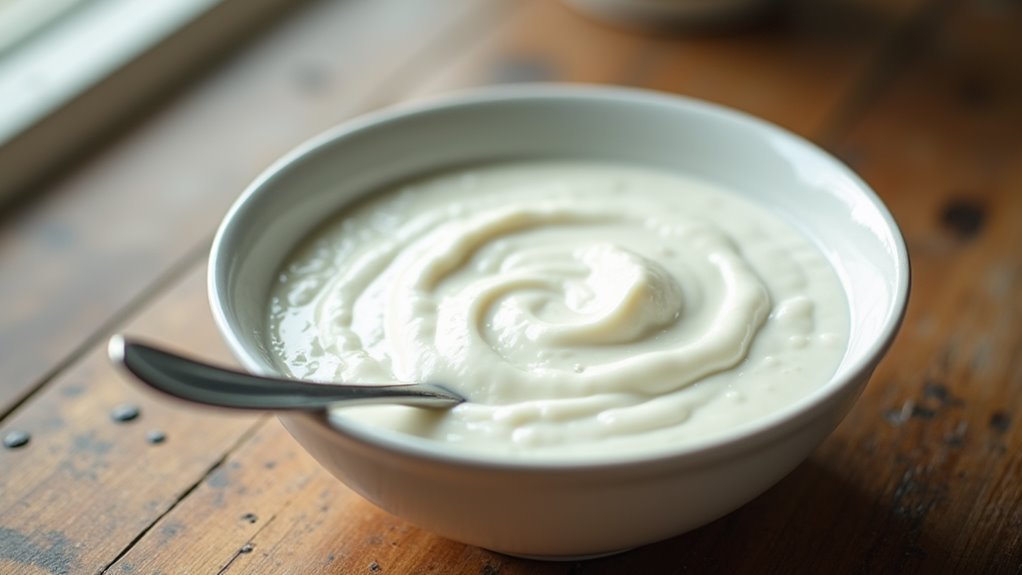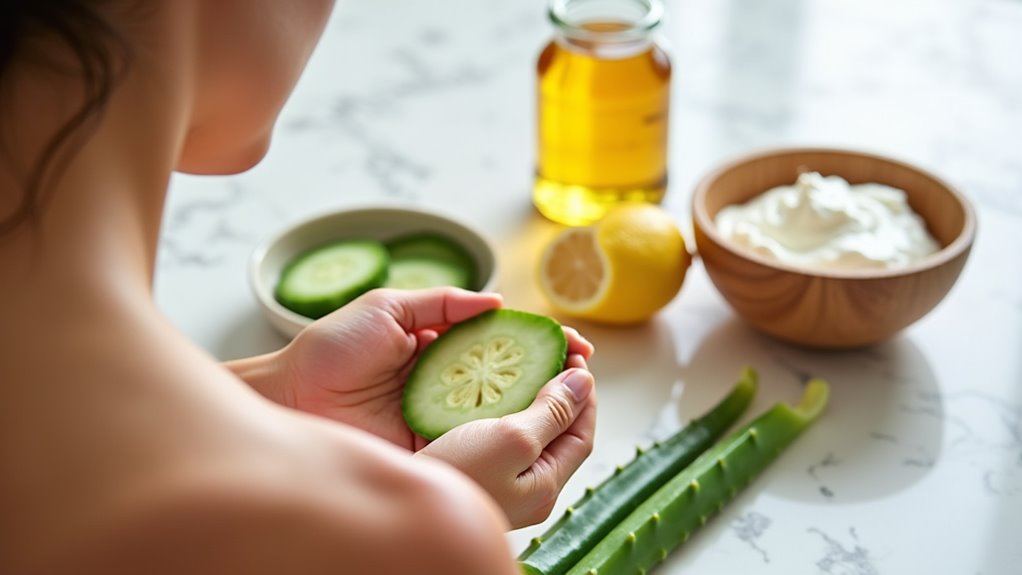The Weirdest (But Effective) Cure for Yeast Infections
While it might sound strange, you can treat a yeast infection by inserting a tampon coated in plain, unsweetened yogurt before bedtime. The live Lactobacillus cultures in yogurt help restore your vaginal pH balance and fight off the Candida yeast causing the infection. You’ll need to remove the tampon within 2 hours and may repeat for up to three nights. There’s much more to understand about this natural remedy’s effectiveness and proper usage.
How Yogurt Tampons Combat Yeast Infections
While natural remedies for yeast infections have existed for centuries, yogurt tampons have gained popularity as an effective home treatment. You’ll find that many women in your community have discovered this natural healing remedy, which harnesses the power of beneficial bacteria found in plain, unsweetened yogurt.
To try this method, you’ll need to coat a regular tampon with plain yogurt containing live cultures, particularly Lactobacillus acidophilus. Insert it before bedtime and remove it in the morning. The good bacteria in the yogurt help restore your vaginal pH balance and fight off the overgrowth of Candida yeast. You can repeat this process for up to three nights. Probiotics are essential in maintaining a healthy balance of bacteria in the body, which can further support your efforts in combating yeast infections.
Remember to use only unflavored, organic yogurt to avoid irritation from added sugars or preservatives. Many women report feeling relief within 24 hours, though you should consult your healthcare provider if symptoms persist beyond a week.
The Science Behind Lactobacillus and Vaginal Health
Understanding how Lactobacillus bacteria function in the vaginal environment reveals why they’re so crucial for feminine health.
These beneficial microorganisms create lactic acid, maintaining an optimal pH balance that keeps harmful bacteria and fungi at bay. When you have healthy levels of Lactobacillus, your vaginal ecosystem stays naturally protected.
Your vaginal flora relies on these friendly bacteria to prevent overgrowth of Candida albicans, the fungus responsible for yeast infections.
Lactobacillus species work by producing hydrogen peroxide and specific compounds that stop Candida from attaching to vaginal walls. Think of them as your body’s natural defense team.
Many women’s health issues arise when this delicate balance gets disrupted by antibiotics, hormonal changes, or harsh hygiene products. Dietary changes like reducing sugar intake can also support the growth of these beneficial bacteria.
That’s why replenishing these good bacteria through probiotic-rich foods or supplements can help restore your natural protective barrier and prevent future infections.
Step-by-Step Guide to Using Yogurt Tampons
One natural way to harness the power of Lactobacillus is through yogurt tampons – a home remedy that applies beneficial bacteria directly where they’re needed. You’ll want to start with plain, unsweetened yogurt containing live cultures. Before bedtime, dip a fresh tampon in the yogurt and insert it, leaving it in for no more than 2 hours.
| Step | What You Need | Important Notes |
|---|---|---|
| Prep | Plain yogurt | Must be unsweetened |
| Apply | Fresh tampon | Never reuse |
| Time | 2-hour max | Remove before sleep |
Remember to choose a high-quality organic yogurt and check the label for active Lactobacillus cultures. While this method can provide relief, don’t use it if you’re experiencing severe symptoms or aren’t sure about your diagnosis. You’ll get the best results by using this remedy at the first sign of irritation, combined with other healthy practices like wearing cotton underwear and avoiding tight clothes. Additionally, incorporating probiotic-rich foods into your diet can further support the balance of good bacteria in your body.
Benefits and Potential Risks of This Natural Remedy
Before trying any natural remedy like yogurt tampons, it’s important to weigh both the benefits and potential risks.
You’ll find that yogurt’s natural probiotics can help restore your vaginal pH balance and fight off harmful bacteria. Plus, it’s an affordable, easily accessible option that many women in our community have found effective.
However, you should be aware of potential complications. If you’re not using plain, unsweetened yogurt, you could worsen your infection due to added sugars.
There’s also a risk of mess and discomfort if the tampon isn’t inserted correctly. Some women experience irritation or allergic reactions, especially if they’re sensitive to dairy products.
You’ll want to consult your healthcare provider before starting this treatment, particularly if you’ve never had a diagnosed yeast infection before. Additionally, consider that high-sugar foods can contribute to yeast overgrowth, which may complicate your condition.
While many of us seek natural solutions, it’s essential to ensure you’re treating the right condition and not masking symptoms of something more serious.
Choosing the Right Type of Yogurt for Treatment
When treating a yeast infection with yogurt, selecting the right type is crucial for effectiveness and safety. You’ll want to choose plain, unsweetened yogurt that contains live probiotic cultures, specifically Lactobacillus acidophilus. This beneficial bacteria helps restore your body’s natural balance and fight off the overgrowth of harmful yeast.
To ensure you’re getting the most effective treatment, follow these essential guidelines:
-
Look for “live” or “active cultures” on the label – avoid yogurt that’s been heat-treated after fermentation.
-
Choose organic yogurt whenever possible to avoid exposure to antibiotics or hormones that could disrupt your body’s healing process.
-
Check the sugar content – it should be minimal or zero, as sugar can feed yeast and worsen the infection.
Remember to store your yogurt properly in the refrigerator and always check the expiration date before use. If you notice any unusual odors or discoloration, choose a fresh container instead.
When to Choose Medical Treatment Over Home Remedies
Although yogurt and other natural remedies can effectively treat mild yeast infections, certain situations demand immediate medical attention.
If you’re experiencing severe itching, burning, or unusual discharge that persists for more than a week, it’s time to see your doctor. You’ll also want to seek professional help if you’ve had four or more infections in the past year.
Don’t rely on home treatments if you’re pregnant, have uncontrolled diabetes, or a weakened immune system. These conditions can make infections more complicated and dangerous. Additionally, high blood sugar levels can exacerbate yeast growth, necessitating prompt medical intervention.
You should also visit your doctor if you’re unsure whether your symptoms actually indicate a yeast infection – other conditions can mimic similar symptoms.
If you develop fever, severe pelvic pain, or foul-smelling discharge, stop using home remedies immediately and contact your healthcare provider.
Frequently Asked Questions
Can I Use Flavored Yogurt Instead of Plain Yogurt?
You shouldn’t use flavored yogurt since added sugars can actually feed the yeast and make your infection worse. Stick with plain, unsweetened yogurt that contains live cultures for the best results.
How Long Should I Leave the Yogurt Tampon in Overnight?
You’ll want to leave your yogurt tampon in for 6-8 hours while sleeping. Don’t exceed 8 hours, and make sure to use a fresh application if you’re continuing treatment the next night.
Will Yogurt Stain My Underwear or Bedsheets?
You’ll want to wear a pad since yogurt can leak and stain fabrics. Using a pantyliner overnight will protect your underwear and sheets while you’re treating yourself.
Can I Reuse the Same Applicator for Multiple Treatments?
You shouldn’t reuse applicators – they can harbor bacteria and cause more infections. It’s best to use a fresh, clean applicator each time to protect your health down there.
Is It Safe to Use This Method While on My Period?
You shouldn’t use internal treatments during your period, as it can interfere with both the treatment’s effectiveness and your menstrual flow. Wait until your period ends before starting treatment.





